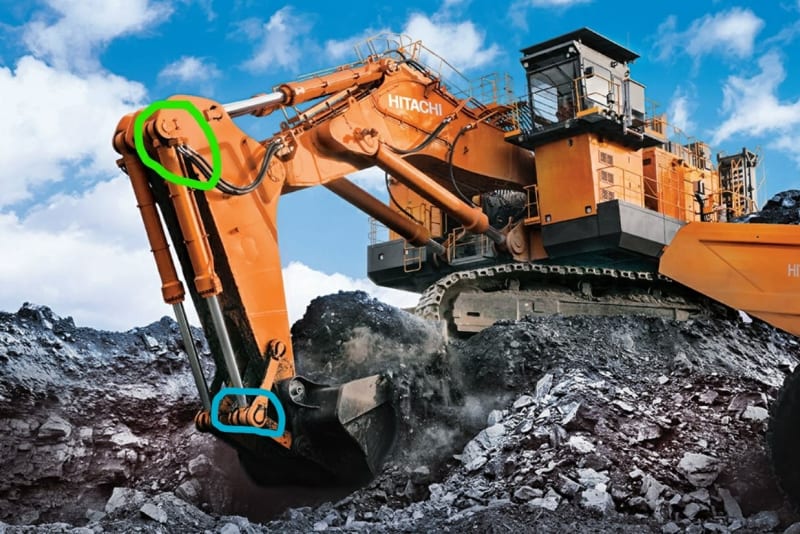Hi all,
I’m attempting to measure dynamic loads on the pins and bushes at the indicated location on an excavator marked in blue.
I’m thinking of installing a pressure transducer in-between the hydraulic hoses at the location marked in green. The data will be transmitted to the cloud.
With the measured pressure and the dimensions of the hydraulic cylinder, I can calculate the loads on the pins and bushes over a period of time.
Can I get some second opinions regarding the expected accuracy of this method of measurement? Are there any sources of error that could render the data inaccurate?
I like this method because its minimally intrusive to the machine, which is important because the machine isn’t owned by us, therefore essential that it’s not interrupted in any way.
Thanks in advance for the help.
I’m attempting to measure dynamic loads on the pins and bushes at the indicated location on an excavator marked in blue.
I’m thinking of installing a pressure transducer in-between the hydraulic hoses at the location marked in green. The data will be transmitted to the cloud.
With the measured pressure and the dimensions of the hydraulic cylinder, I can calculate the loads on the pins and bushes over a period of time.
Can I get some second opinions regarding the expected accuracy of this method of measurement? Are there any sources of error that could render the data inaccurate?
I like this method because its minimally intrusive to the machine, which is important because the machine isn’t owned by us, therefore essential that it’s not interrupted in any way.
Thanks in advance for the help.

